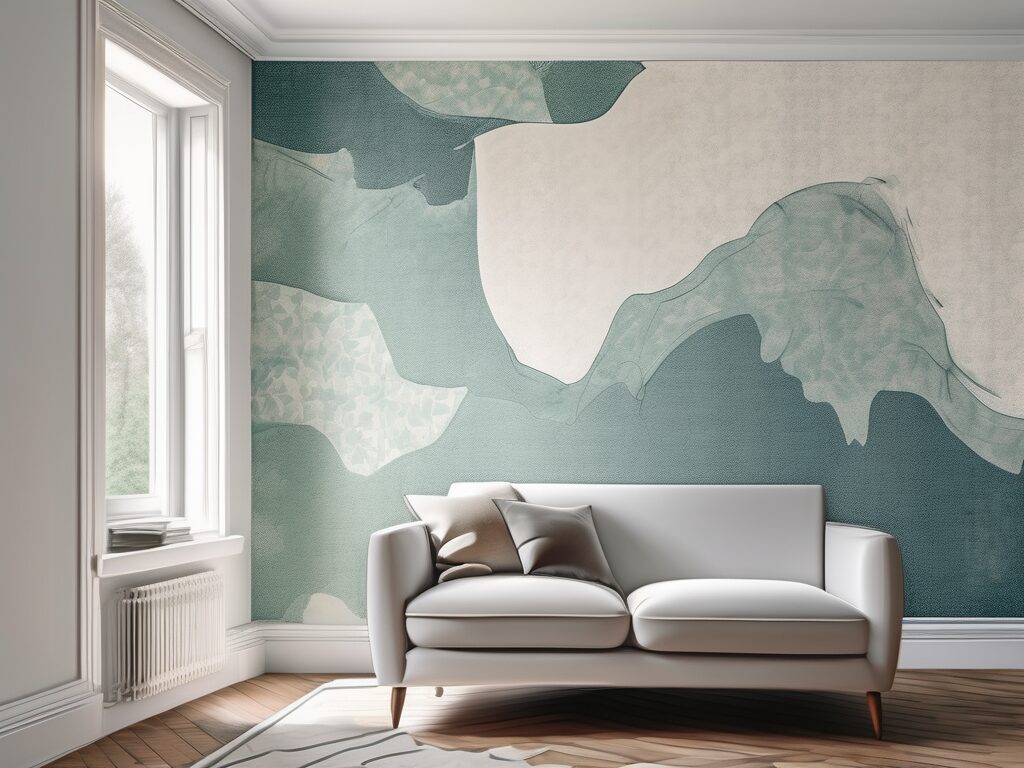
Agent A-Team or Solo Superhero? Finding the Right Real Estate Partner for Your Selling Journey in Wildwood Florida
When it comes to selling your home in Wildwood, Florida,…
January 29, 2024
When it comes to selling a home, every detail matters. From the curb appeal to the interior design, potential buyers are scrutinizing every aspect of a property. One element that can greatly impact the perceived value of a home is wallpaper. While some homeowners may have a soft spot for the charm and character it brings, others see it as a dated relic that needs to go. In this article, we will explore the insights and expert opinions on the impact of removing old wallpaper on home value.
Before delving into the specifics of removing wallpaper, it is important to understand how it can affect home appraisal and buyer perception. Experts in the real estate industry have highlighted key aspects that can make or break a sale.
Wallpaper has long been a popular choice for homeowners looking to add a touch of personality and style to their living spaces. With its wide range of patterns, textures, and colors, wallpaper can transform a room and create a unique atmosphere. However, when it comes to selling a home, the impact of wallpaper on home value becomes a crucial consideration.
One of the first considerations when assessing the impact of wallpaper on home value is personal style preferences. While some buyers may appreciate the unique patterns and textures that wallpaper can bring, others might find them overwhelming or dated. Experts advise that when it comes to home appraisal, it is critical to appeal to a wide range of buyers. This means creating a neutral canvas that allows potential buyers to envision their own style.
Neutral colors and clean lines are often favored by home appraisers as they provide a blank slate for buyers to project their own design ideas onto. By removing wallpaper and opting for a fresh coat of paint, homeowners can increase the appeal of their property and potentially boost its value.
When it comes to selling a home, first impressions matter. Dated wallpaper can give potential buyers the impression that a property is stuck in the past and may require significant updating. This perception can affect the offers received and the overall marketability of a home.
Buyers are often looking for move-in ready homes that require minimal additional work. Dated wallpaper can be seen as a project that needs to be tackled before settling into a new home. This can deter potential buyers who are looking for a hassle-free purchase and may result in decreased interest and offers.
Studies have shown that homes with wallpaper often receive lower offers compared to those with updated, modern interiors. Buyers may factor in the costs and effort required to remove wallpaper and repaint the walls, resulting in lower purchase offers. Additionally, wallpaper can create a psychological barrier for buyers who envision the additional time and expense it will take to achieve their desired aesthetic.
It is important for homeowners to consider the potential impact of wallpaper on their property’s value and marketability. By removing wallpaper and presenting a clean, neutral interior, homeowners can increase the chances of receiving higher offers and attracting a wider pool of potential buyers.
In today’s real estate market, buyers are increasingly seeking turnkey homes. This means properties that are move-in ready and require minimal additional work. Wallpaper can be seen as a project that needs to be tackled before settling into a new home. Consequently, homes with wallpaper may not align with buyer expectations, resulting in decreased interest and offers.
By removing wallpaper and creating a neutral, updated interior, homeowners can position their property as a turnkey home that is ready for immediate occupancy. This can significantly increase the appeal of the home and attract buyers who are looking for a hassle-free purchase.
In conclusion, the impact of wallpaper on home value and buyer perception should not be underestimated. By understanding the preferences of potential buyers and meeting their expectations for a turnkey home, homeowners can maximize the value of their property and increase their chances of a successful sale.
Now that the impact of wallpaper on home value has been established, the next question that arises is whether it is worth removing wallpaper before selling a home. This decision can depend on various factors, including the condition of the wallpaper, the local real estate market, and the cost of removal.
When considering whether to remove wallpaper before selling your home, it’s important to assess the condition of the wallpaper itself. If the wallpaper is outdated, damaged, or peeling, it may be best to remove it. Outdated wallpaper can make a home feel dated and unappealing to potential buyers. Similarly, damaged or peeling wallpaper can give the impression that the home has not been well-maintained, which can negatively impact its perceived value.
However, if the wallpaper is in good condition and complements the overall aesthetic of the home, it may be worth keeping. In some cases, well-maintained wallpaper can add a unique and charming touch to a home, setting it apart from other properties on the market. This is especially true if the wallpaper is a high-quality, designer brand that is still in style.
Another factor to consider when deciding whether to remove wallpaper is the local real estate market. If you are selling your home in a competitive market where buyers have many options to choose from, removing wallpaper may be a wise decision. By presenting a neutral canvas, free from any personal design choices, you allow potential buyers to envision themselves in the space more easily. This can increase the likelihood of receiving offers and potentially lead to a quicker sale.
On the other hand, if you are selling your home in a market where unique and character-filled properties are in high demand, keeping the wallpaper may be a strategic choice. Some buyers actively seek out homes with interesting design elements, and well-maintained wallpaper can be a selling point for these individuals. By showcasing the wallpaper as a feature, you can attract a specific niche of buyers who appreciate and value the uniqueness it brings to the home.
Finally, the cost of wallpaper removal should also be taken into consideration. Removing wallpaper can be a time-consuming and labor-intensive process, especially if the wallpaper has been applied with strong adhesive. In some cases, it may be necessary to hire professionals to ensure the job is done properly. The cost of removal can vary depending on the size of the space and the complexity of the wallpaper, so it’s important to factor this into your decision-making process.
In conclusion, whether to remove wallpaper before selling your home is a decision that should be made based on careful consideration of various factors. Assessing the condition of the wallpaper, evaluating the local real estate market, and considering the cost of removal are all important steps in making an informed choice. Ultimately, the goal is to present your home in the best possible light to potential buyers, so choose the option that will enhance its appeal and maximize its value.
If you decide to remove the wallpaper, it is essential to be aware of the challenges that may arise during the process. Wallpaper removal can be a time-consuming and labor-intensive task, and understanding the available options can help homeowners make an informed decision.
Removing wallpaper is not as simple as peeling it off the walls. It requires careful consideration and planning to ensure a successful outcome. Let’s delve deeper into some of the challenges you may encounter and explore the various methods and techniques to overcome them.
One popular method of removing wallpaper involves using a scoring tool to create small punctures in the wallpaper, allowing the removal solution to penetrate and dissolve the adhesive. While this method can be effective, it may not be suitable for all types of wallpaper.
Some wallpapers have a vinyl coating or are made of delicate materials that can be easily damaged by the scoring tool. It is crucial to test a small inconspicuous area before proceeding with this method to avoid any potential harm to the wallpaper or the underlying wall surface.
In older homes, it is not uncommon to find multiple layers of wallpaper. Each layer must be carefully removed to ensure a smooth and clean surface for painting or applying new wallpaper. However, removing multiple layers can be a daunting task.
Patience is key when dealing with multiple layers of wallpaper. It is important to approach the removal process methodically, starting with the top layer and working your way down. Using a wallpaper removal solution and a scraper can help soften the adhesive and make the removal process more manageable.
However, be prepared for the possibility of stubborn layers that require additional effort. In such cases, it may be necessary to repeat the process or seek professional assistance to ensure a thorough removal.
Painting over wallpaper may seem like a quick fix, but experts strongly advise against it. While it may save time and effort in the short term, it can lead to long-term issues and compromise the overall aesthetic appeal of the room.
When you paint over wallpaper, the texture and seams of the wallpaper can still be visible beneath the paint. This can create an uneven and unprofessional-looking finish. Additionally, if the wallpaper starts to peel or curl, it can affect the paint’s durability, leading to further maintenance and repair in the future.
It is best to invest the time and effort in properly removing the wallpaper before proceeding with any painting or applying new wallpaper. This will ensure a smooth and flawless surface for your desired finish.
A wallpaper steamer is a highly effective tool for removing wallpaper. It uses steam to loosen the adhesive, making the removal process easier and minimizing the risk of damaging the walls.
Using a wallpaper steamer requires an investment in both time and money, but the results can be well worth it. The steam penetrates the wallpaper, softening the adhesive and allowing for easier removal. This method is particularly useful for stubborn or multiple layers of wallpaper.
When using a wallpaper steamer, it is important to follow the manufacturer’s instructions carefully to ensure safety and optimal results. Take your time and work in small sections, allowing the steam to penetrate the wallpaper before gently scraping it off with a scraper or putty knife.
Once the wallpaper has been removed, it is essential to assess the condition of the walls. Dents, scratches, or other imperfections can negatively impact the overall appearance of the room.
Repairing any damage to the walls is a crucial step before painting or applying new wallpaper. Depending on the extent of the damage, you may need to fill in dents and scratches with spackle or joint compound. Sanding the repaired areas smooth will ensure a seamless finish.
After the repairs are complete, it is important to prime the walls before painting or applying new wallpaper. Priming helps create a uniform surface and enhances the adhesion of the paint or wallpaper adhesive, ensuring a long-lasting and professional-looking result.
Removing wallpaper can be a challenging task, but with the right techniques and tools, it can be accomplished successfully. Take the time to assess your specific situation and choose the method that best suits your needs. Whether you opt for the scoring tool method, invest in a wallpaper steamer, or seek professional assistance, the end result will be a fresh canvas ready for your desired wall treatment.
After the wallpaper has been successfully removed, it is time to decide what to do with the walls. The choice between painting, re-walling, or reapplying wallpaper can have a significant impact on both the aesthetics and the value of the home.
One option to consider is painting the walls. Painting allows for a fresh start and gives you the opportunity to choose a color that suits your style and preferences. Whether you opt for a bold and vibrant hue or a calming and neutral tone, the right paint color can completely transform the look and feel of a room. Additionally, painting the walls can help cover up any imperfections or damage that may have been left behind after removing the wallpaper.
If you’re looking for a more unique and textured finish, you might want to consider re-walling your space. Re-walling involves installing new drywall or paneling over the existing walls. This option allows you to create a completely new surface, free from any remnants of the old wallpaper. With re-walling, you have the flexibility to choose from a variety of materials and finishes, such as smooth drywall or decorative paneling. This can add depth and character to your walls, giving your space a customized and sophisticated look.
On the other hand, if you still appreciate the look of wallpaper and want to maintain that aesthetic, you can always reapply wallpaper. However, before doing so, it is important to properly prepare the walls by cleaning, priming, and smoothing any imperfections. This will ensure a smooth and long-lasting application. When selecting new wallpaper, consider the style and theme of your space. Whether you prefer bold patterns, subtle textures, or classic designs, there are countless options to choose from that can enhance the overall ambiance of your room.
When deciding what to do with your walls after wallpaper removal, it is essential to take into account your personal style, the functionality of the space, and the overall atmosphere you want to create. Each option – painting, re-walling, or reapplying wallpaper – offers its own unique benefits and can contribute to the overall aesthetics and value of your home. Take the time to explore different possibilities, gather inspiration, and consult with professionals if needed, to ensure that your walls reflect your vision and create a space that you truly love.
While removing wallpaper is often the recommended approach, there may be situations where it is not feasible or cost-effective. In these cases, there are strategies that homeowners can employ to minimize the impact of stubborn wallpaper and increase the chances of a successful sale.
In some instances, hiring a professional contractor for wallpaper removal and wall painting can be a prudent investment. An experienced contractor can provide an estimate, including the cost of labor and materials, which can help homeowners make an informed decision on whether to proceed with removal or explore alternative options.
Strategic staging can be a powerful tool in diverting attention away from wallpaper and highlighting a home’s best features. By carefully choosing furniture, accessories, and color schemes, homeowners can create a cohesive and visually appealing space that downplays the presence of wallpaper.
In conclusion, the impact of removing old wallpaper on home value cannot be underestimated. From influencing buyer perception to affecting the offers received, wallpaper plays a significant role in the selling process. While the decision to remove wallpaper can be a personal one, considering expert insights and exploring available options will help homeowners make informed choices. Ultimately, creating a neutral, move-in ready space can significantly increase the perceived value of a home and expedite the selling process.

If you want the Richr team to help you save thousands on your home just book a call.
 Book a call
Book a call